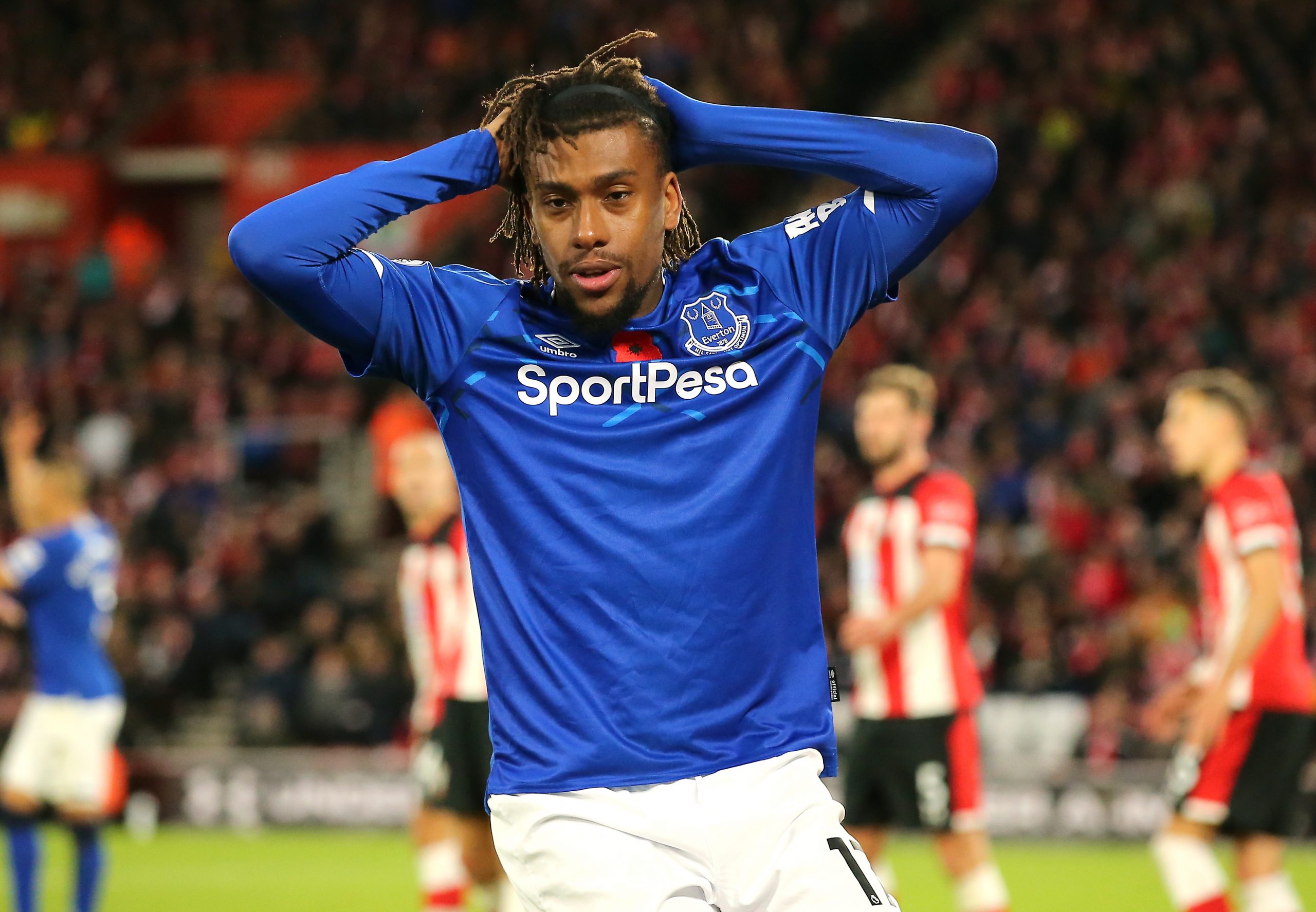Everton are fine. There is, of course, considerable angst about their table position. They sit in 15th place after 12 games, which is certainly not ideal. However, even that perch is better than 17th, the spot they clung to before last weekend’s victory over Southampton. But, contrary to the well-worn phrase, position isn’t everything in life. Everton may be sitting in 15th but they've accumulated 14 points. That’s only three points behind fifth-place Sheffield United. The middle of the Premier League table is extremely congested this season. Two teams have 17 points, three have 16, four have 15 and Everton are accompanied by Tottenham Hotspur on 14. With the midtable brimming with respectable sides, how things look now are certainly not how things will look in a month or two, or even after the games resume in two weeks’ time. Should Everton start winning games, they're likely to fly up the table in a hurry. The real question is, will they start winning games? There’s good news on that front as well. Everton’s lack of points so far this season is not particularly reflective of their underlying performances. In fact, by expected goals, the Toffees seem more like a Europa League level side than a relegation battler. A quick look at their non-penalty xG difference shows they are the sixth most effective team in the Premier League. 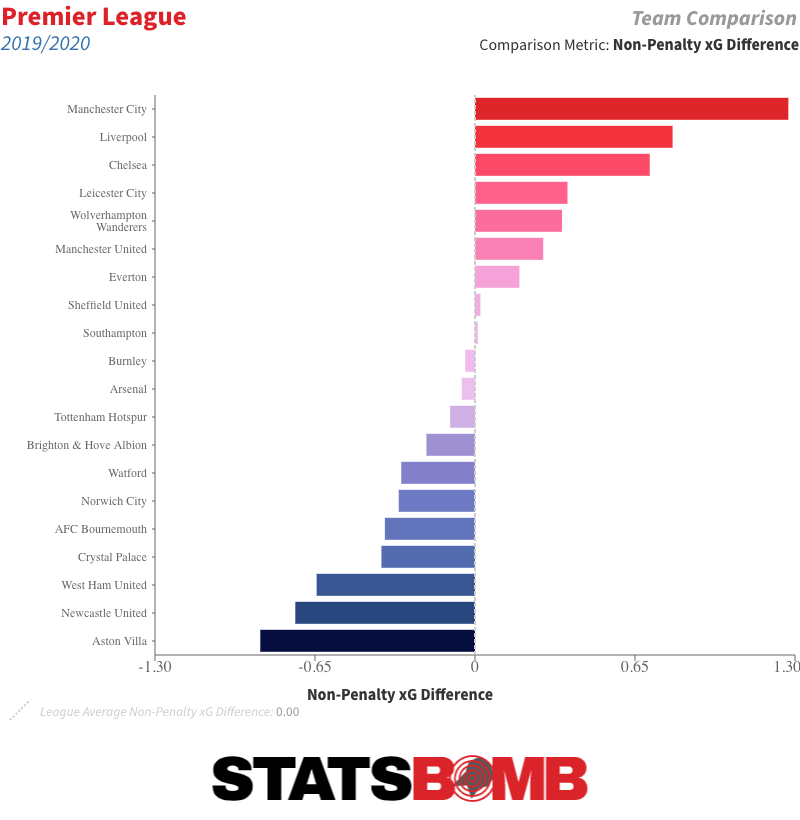 The underlying numbers, at least, show Everton are competent on both sides of the ball. They have the fifth-highest non-penalty xG in the Premier League at 1.32 per match, and the eighth-best non-penalty xG conceded mark at 1.10. These are the kinds of numbers you’d expect from a team competing for a Europa League spot, which at only two points off of seventh place, they technically are. Another way to interpret Everton’s start is to look at the trendlines over the last couple of years. A ten-game rolling average of their xG and xG conceded shows that after playing extremely well at the end of last season, Everton is struggling to keep up their on-fire form. Yet at the same time, there are no real long-term concerns, the trendlines are moving in the right direction, and by and large, Marco Silva has his squad getting the better of things, at least when it comes to expectations.
The underlying numbers, at least, show Everton are competent on both sides of the ball. They have the fifth-highest non-penalty xG in the Premier League at 1.32 per match, and the eighth-best non-penalty xG conceded mark at 1.10. These are the kinds of numbers you’d expect from a team competing for a Europa League spot, which at only two points off of seventh place, they technically are. Another way to interpret Everton’s start is to look at the trendlines over the last couple of years. A ten-game rolling average of their xG and xG conceded shows that after playing extremely well at the end of last season, Everton is struggling to keep up their on-fire form. Yet at the same time, there are no real long-term concerns, the trendlines are moving in the right direction, and by and large, Marco Silva has his squad getting the better of things, at least when it comes to expectations. 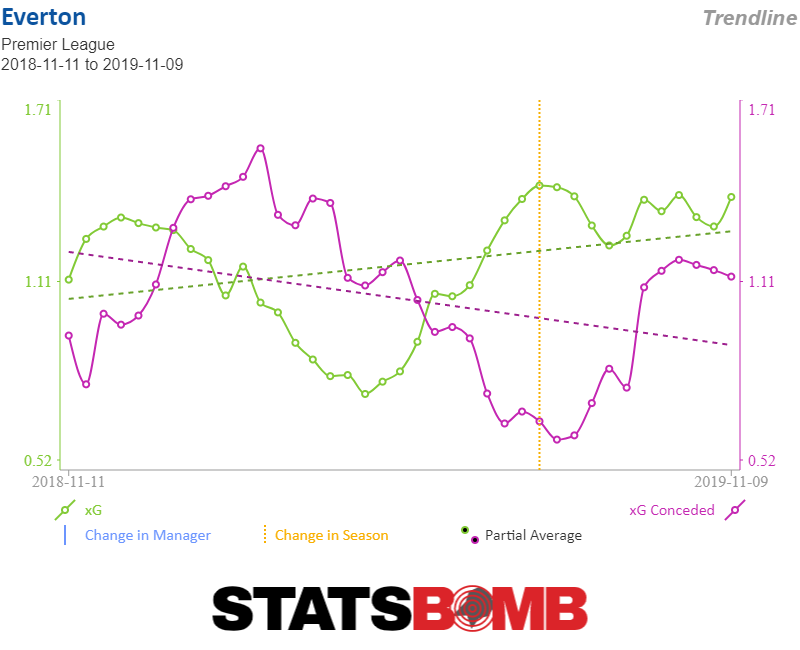 The real problem for Everton is that while their xG has drifted downward from its sky-high perch at the end of last season, their actual goal difference has plummeted. The team is playing somewhat worse, but they’re really getting kicked in the teeth by results. Some of Everton’s lacking point total really is just down to easily identifiable bad luck. There’s not much you can do about finding yourself on the wrong side of a VAR call against Brighton that the Premier League later acknowledged was incorrect. These things might even themselves out in the long run, but 12 games is certainly not the long run.
The real problem for Everton is that while their xG has drifted downward from its sky-high perch at the end of last season, their actual goal difference has plummeted. The team is playing somewhat worse, but they’re really getting kicked in the teeth by results. Some of Everton’s lacking point total really is just down to easily identifiable bad luck. There’s not much you can do about finding yourself on the wrong side of a VAR call against Brighton that the Premier League later acknowledged was incorrect. These things might even themselves out in the long run, but 12 games is certainly not the long run. 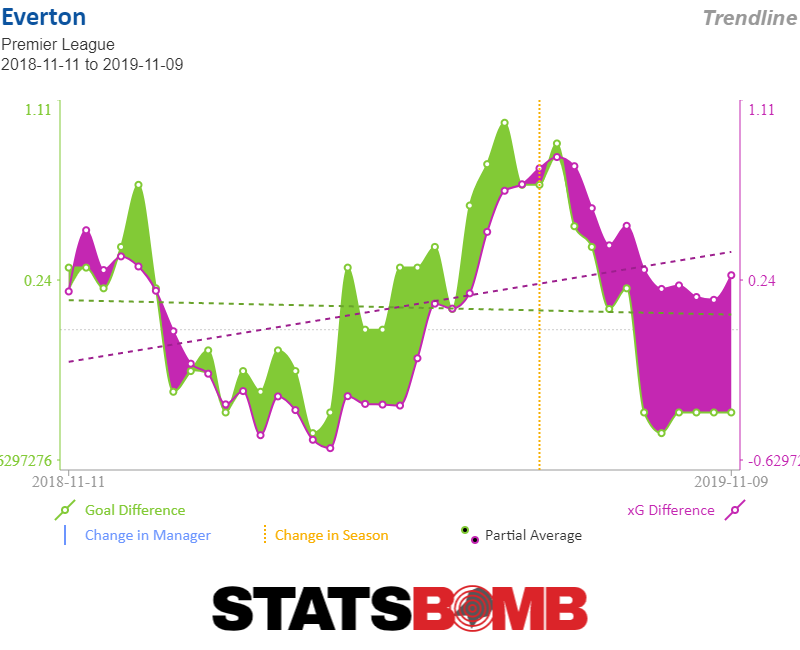 There are, of course, times when xG is misleading, when a fine-grained analysis of tactical choices and personnel decisions will reveal tangible reasons for a team’s actual goals diverging from their expected goals. This doesn’t appear to be one of those times. The team profiles as a fairly typical high pressing aggressive defense. They do most of their defending in the opposition half.
There are, of course, times when xG is misleading, when a fine-grained analysis of tactical choices and personnel decisions will reveal tangible reasons for a team’s actual goals diverging from their expected goals. This doesn’t appear to be one of those times. The team profiles as a fairly typical high pressing aggressive defense. They do most of their defending in the opposition half. 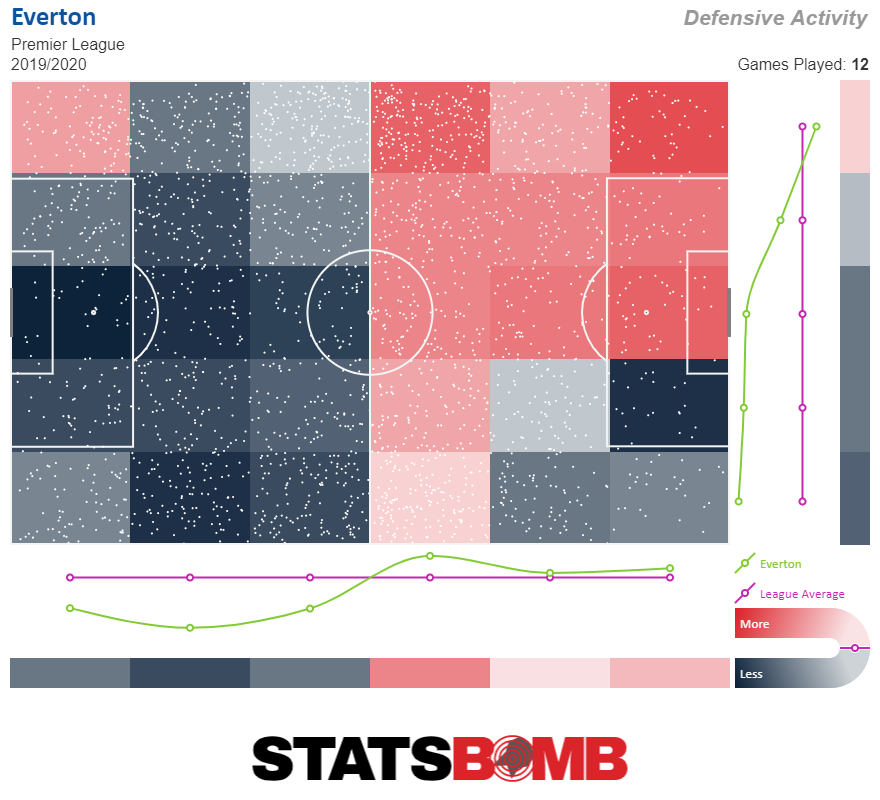 That high press is generally effective, and Everton concede very few shots. Only Manchester City’s 7.42 shots conceded per game ranks below Everton’s 8.42. But, as often happens with aggressive defenses, when the press is broken, Everton’s soft underbelly is exposed. Everton, on average, allow extremely high-quality shots through. Only two teams, Manchester City (again with the aggressive pressing sides) and West Ham, give up higher xG per shot conceded than Everton’s 0.13. Put all those numbers together and it comes out to 13.43 non-penalty xG conceded, but they’ve conceded 17.
That high press is generally effective, and Everton concede very few shots. Only Manchester City’s 7.42 shots conceded per game ranks below Everton’s 8.42. But, as often happens with aggressive defenses, when the press is broken, Everton’s soft underbelly is exposed. Everton, on average, allow extremely high-quality shots through. Only two teams, Manchester City (again with the aggressive pressing sides) and West Ham, give up higher xG per shot conceded than Everton’s 0.13. Put all those numbers together and it comes out to 13.43 non-penalty xG conceded, but they’ve conceded 17. 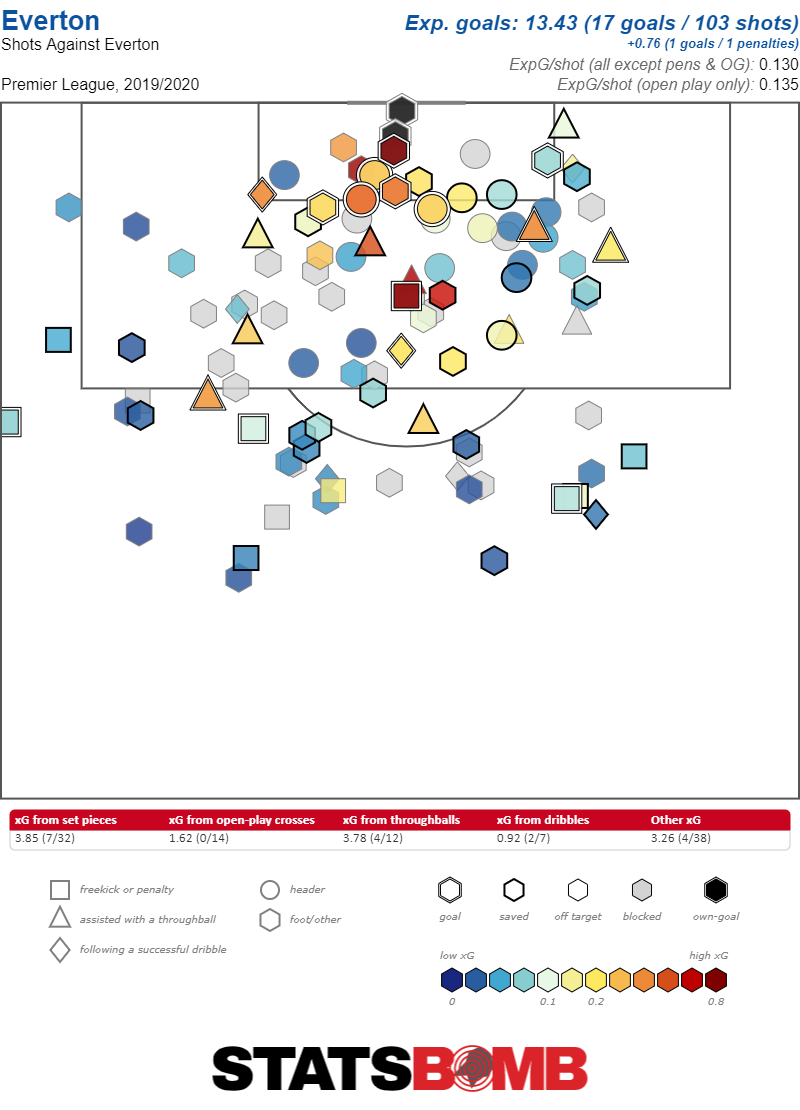 Part of the disconnect is that they’ve conceded two own goals. Own goals are not terribly predictive in and of themselves; even if it might be tempting to suggest they are more likely to happen to a team facing constant pressure, that’s simply not an argument that history supports. So, the fact that Everton have been the victims of two while benefiting from just one is the kind of thing that, again, will work itself out over time. The rest of the difference comes from the fact that Everton’s opponents have put good strikers on the ball. Their opponents have a post-shot xG that’s about a goal higher than their basic xG. Everton keeper Jordan Pickford has had to go flying around his net, where he’s been mostly average at keeping shots out. There’s not a whole lot a team can do when their opponents just keep hitting it sweetly, except, again, trust that the soccer gods are fickle and everybody’s luck turns eventually.
Part of the disconnect is that they’ve conceded two own goals. Own goals are not terribly predictive in and of themselves; even if it might be tempting to suggest they are more likely to happen to a team facing constant pressure, that’s simply not an argument that history supports. So, the fact that Everton have been the victims of two while benefiting from just one is the kind of thing that, again, will work itself out over time. The rest of the difference comes from the fact that Everton’s opponents have put good strikers on the ball. Their opponents have a post-shot xG that’s about a goal higher than their basic xG. Everton keeper Jordan Pickford has had to go flying around his net, where he’s been mostly average at keeping shots out. There’s not a whole lot a team can do when their opponents just keep hitting it sweetly, except, again, trust that the soccer gods are fickle and everybody’s luck turns eventually. 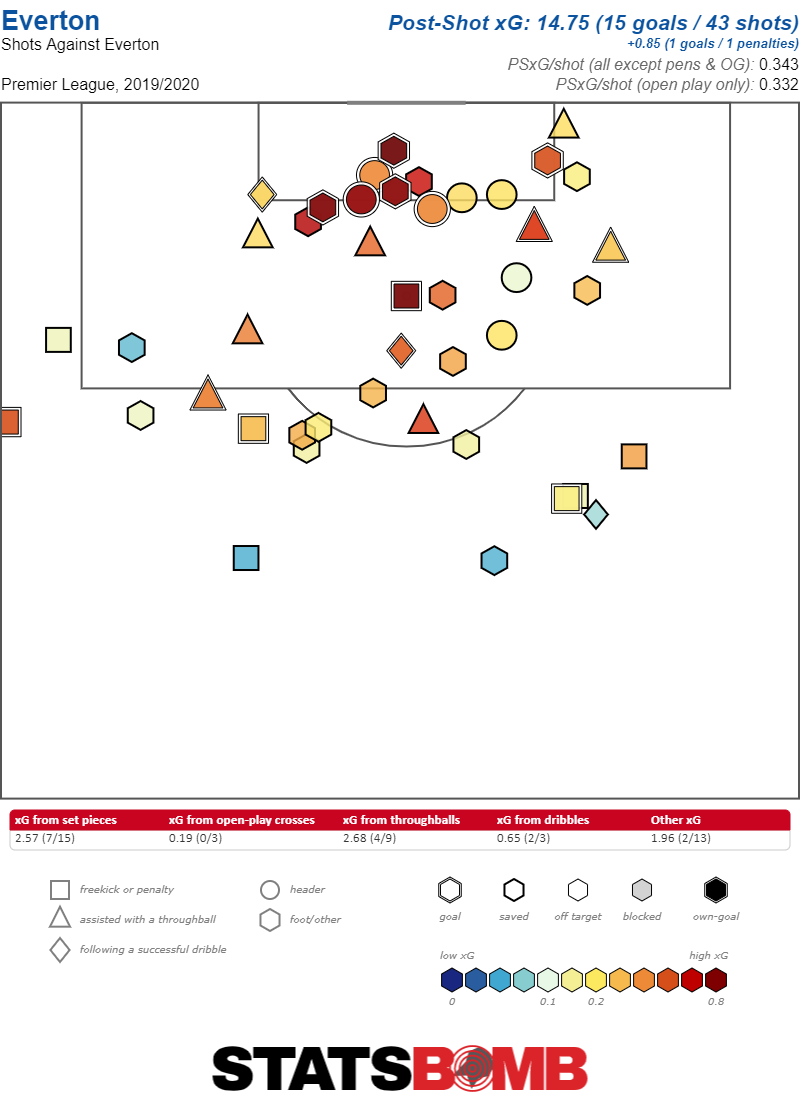 The story is similar on the attacking side of the ball. Everton have been playing well. They’ve created the sixth-most shots in the league, 13.42 per match, at a fairly average xG per shot rate of 0.10, tied for 13th in the Premier League. It’s not the most dynamic way to play, but piling up lots of average shots is a perfectly reasonable way to score goals. The problem is that, again, while the xG is good, 16.07, the actual goals, 13, lag behind. However, as on the defensive side of the ball, a closer examination shows that most of what’s gone wrong is simply that the strikers have run into a number of strong goalkeeper performances. Everton’s post-shot xG is virtually identical to their pre-shot xG, but they’ve only scored 12 goals. That’s as a clear a distillation of keeper performance as you’ll ever see. Everton’s opponents have made a handful of great saves and it’s cost the Toffees points.
The story is similar on the attacking side of the ball. Everton have been playing well. They’ve created the sixth-most shots in the league, 13.42 per match, at a fairly average xG per shot rate of 0.10, tied for 13th in the Premier League. It’s not the most dynamic way to play, but piling up lots of average shots is a perfectly reasonable way to score goals. The problem is that, again, while the xG is good, 16.07, the actual goals, 13, lag behind. However, as on the defensive side of the ball, a closer examination shows that most of what’s gone wrong is simply that the strikers have run into a number of strong goalkeeper performances. Everton’s post-shot xG is virtually identical to their pre-shot xG, but they’ve only scored 12 goals. That’s as a clear a distillation of keeper performance as you’ll ever see. Everton’s opponents have made a handful of great saves and it’s cost the Toffees points. 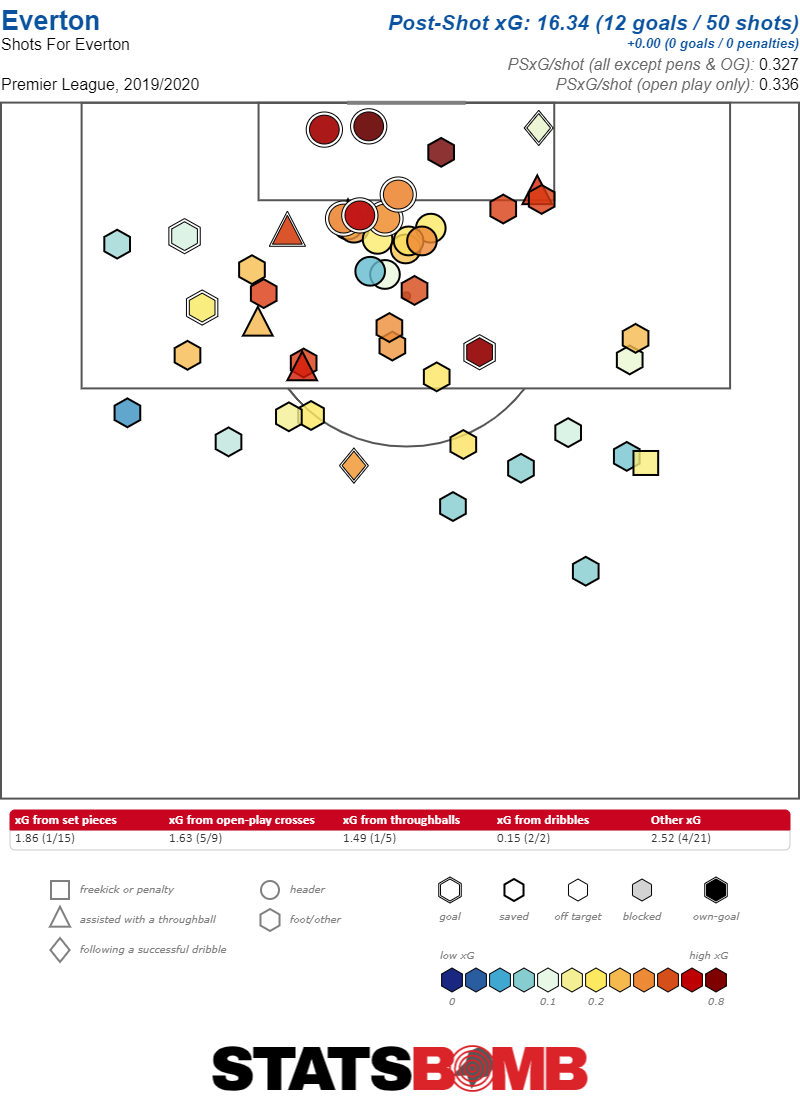 Through 12 games, Everton represent as clear an example of good process and bad results as you’re ever likely to find in the wild. If they keep doing what they’re doing, their results are almost certain to improve. Of course, that’s easier said than done. Playing well but losing is cold comfort, and the league doesn't hand out titles for best process. It is exceedingly difficult to watch your best-laid plans succeed for three months, find yourself nailed to the bottom third of the table, and remain steadfast in your faith that those plans did, in fact, succeed. Everton shouldn’t fire Silva, but they’d be far from the first team to lose faith in a manager after a string of poor results from fine performances. And Silva shouldn’t change the way he sets his team up, but again, better managers than him have reached for solutions to non-existent problems after results didn’t go their way. Up and down the organization, the numbers make it clear that now is the time for both management and the manager to show faith in the project. And that faith is going to be sorely tested, because when the international break ends, Everton get the gift of facing relegation-fodder Norwich City, and then it’s the murderer’s row of the current Premier League top three, with Leicester and Liverpool away followed by Chelsea at Goodison Park. The first 12 games of the season haven’t been an easy time for Everton, but the way forward is clear. As long as they keep playing like this, and their manager is able to keep the performances at the level they’ve been to date, things will improve. And as stern as the tests on the field over the next month will be, the most difficult exam will occur off the pitch. Will Everton be able to keep a steady hand and keep doing the right things, or will bad results ultimately prove too much for a good process to overcome? The answer to that question will define the Toffees' season. Header image courtesy of the Press Association
Through 12 games, Everton represent as clear an example of good process and bad results as you’re ever likely to find in the wild. If they keep doing what they’re doing, their results are almost certain to improve. Of course, that’s easier said than done. Playing well but losing is cold comfort, and the league doesn't hand out titles for best process. It is exceedingly difficult to watch your best-laid plans succeed for three months, find yourself nailed to the bottom third of the table, and remain steadfast in your faith that those plans did, in fact, succeed. Everton shouldn’t fire Silva, but they’d be far from the first team to lose faith in a manager after a string of poor results from fine performances. And Silva shouldn’t change the way he sets his team up, but again, better managers than him have reached for solutions to non-existent problems after results didn’t go their way. Up and down the organization, the numbers make it clear that now is the time for both management and the manager to show faith in the project. And that faith is going to be sorely tested, because when the international break ends, Everton get the gift of facing relegation-fodder Norwich City, and then it’s the murderer’s row of the current Premier League top three, with Leicester and Liverpool away followed by Chelsea at Goodison Park. The first 12 games of the season haven’t been an easy time for Everton, but the way forward is clear. As long as they keep playing like this, and their manager is able to keep the performances at the level they’ve been to date, things will improve. And as stern as the tests on the field over the next month will be, the most difficult exam will occur off the pitch. Will Everton be able to keep a steady hand and keep doing the right things, or will bad results ultimately prove too much for a good process to overcome? The answer to that question will define the Toffees' season. Header image courtesy of the Press Association
2019
Everton should trust the process despite early struggles
By Kevin Lawson
|
November 12, 2019
